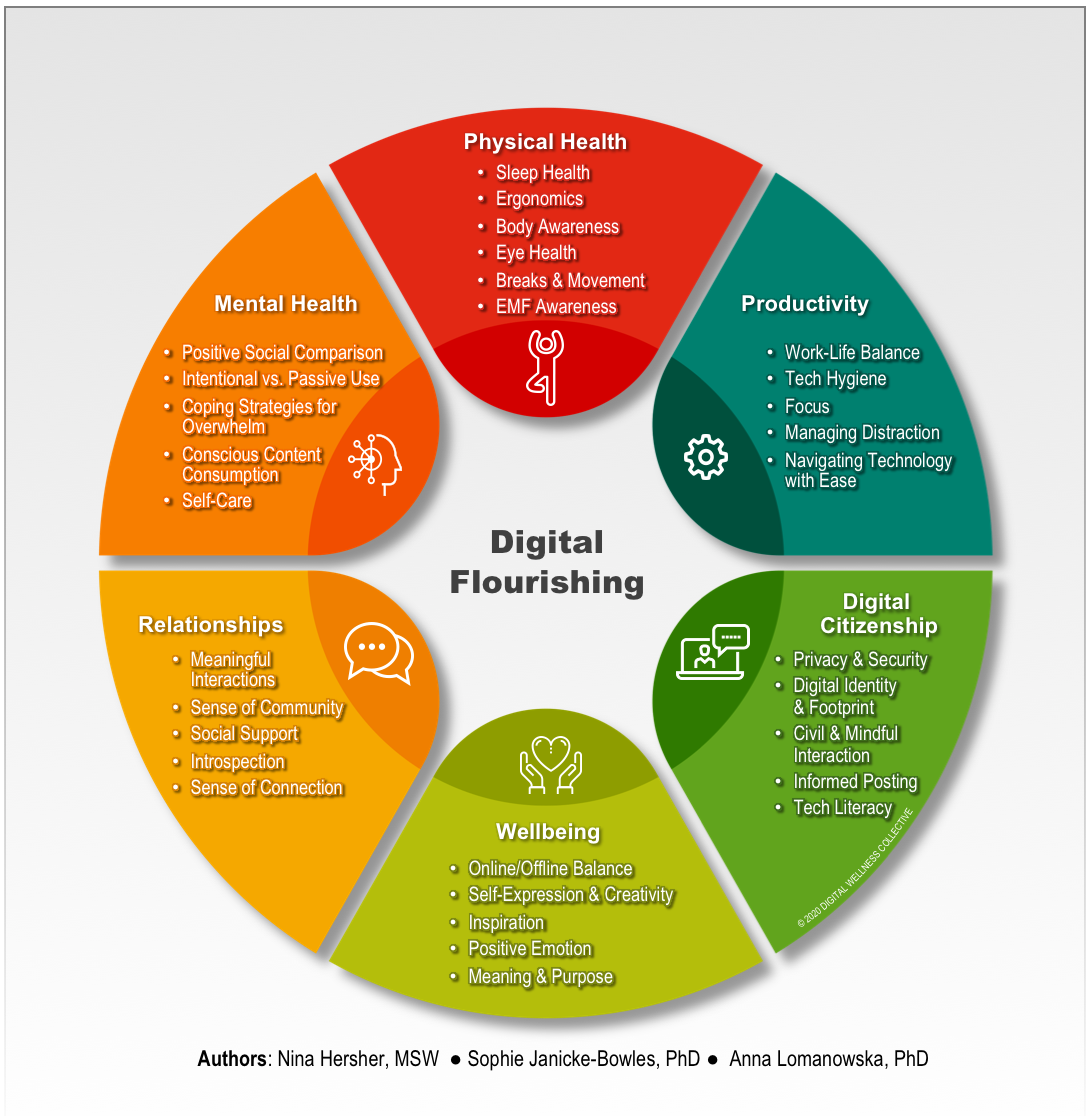Digital Wellness is a topic that is near and dear to my heart. It’s a topic that I think about every morning when I wake up to face the tyranny of the urgent in my inbox; it’s a topic I think about at the end of the workday when my eyes are dry and my back hurts from sitting at my computer too long; it’s a topic I think about when I’m trying to home-school my three children; it’s a topic I think about when I try to imagine what the future will look like someday—whether post-COVID or for my kids In the future.
For many whose work has suddenly become virtual, digital balance is no longer a luxury; it’s a business and lifestyle imperative. Screen time has ballooned from an average of 2.5 hours per day to 6+ hours a day, and Zoom fatigue has become a real issue that all ages can relate to.
We know that screen time overload can lead to a host of negative consequences from text neck to dry eyes to irritability. But what can be done about this when literally our entire world has gone virtual? Here are 4 tips to help find greater digital balance, starting today:
- Acknowledge that, while these challenges seem permanent and pervasive, this too shall pass, and, in the meantime, our mindset can shape our outcomes and overall happiness. According to pre-eminent positive psychologist Sonja Lyubomirsky, only 10% of our happiness is determined by external circumstances; the only 90% is due to our genes and perception of the world, meaning that we have the power and tools at our disposal to reframe our experiences for post-traumatic growth rather than stress.
- Take a moment to check in on your own digital wellness. Whether you do a short body-scan meditation or take the digital flourishing survey, learning about how you respond to screen time and how you can improve your relationship to tech is worth the time and effort. Examining your digital behavior through the lens of self-awareness will help you better understand your strengths and weaknesses, what makes you happy/unhappy, and what motivates you. From this place, look at your online behavior and be really honest with yourself, otherwise, you may be missing the mark.
- Dial into your data – track how much time you are spending online, what you are looking at, and how this aligns with your personality and values. For example, if one of your key values is family, but you are spending hours every day randomly browsing news articles or playing games online rather than enjoying time with them, maybe it is time to rethink. If you value innovation in your work and are using online tools to come up with new, creative ideas to be productive in your role, then this is a good use of your time.
- Join the self-care revolution by giving yourself a much-needed break from the pressure of constant connectivity. May 1st marks the first inaugural #DigitalWellnessDay, an opportunity for you to commit to time and space to reflect on when, where, why, and how you are using technology.

It is time to reframe the negative narrative about spending time online, talking instead about finding a healthy digital balance so that we can flourish as human beings and employees. I was struck by something that Ross Esplin, Customer and Digital Director at Insights shared with me the other day, “Because of the coronavirus pandemic, we’re more reliant on technology than ever before – and that has the potential to lead to negative behaviors. Increased self-awareness will help you thrive during the current disruption, as well as setting you up for digital wellness into the future. Self-aware people conduct relationships in a way that is mutually beneficial and respectful, resulting in improved communications and decision making. That all helps us do our job better and stay centered when we’re physically distant from others, and inevitably spending more time online.”
By taking the time to invest in creating digital balance, it is possible to use technology in a way that supports healthier relationships – not only with ourselves but with our families, jobs, colleagues, and communities too.


